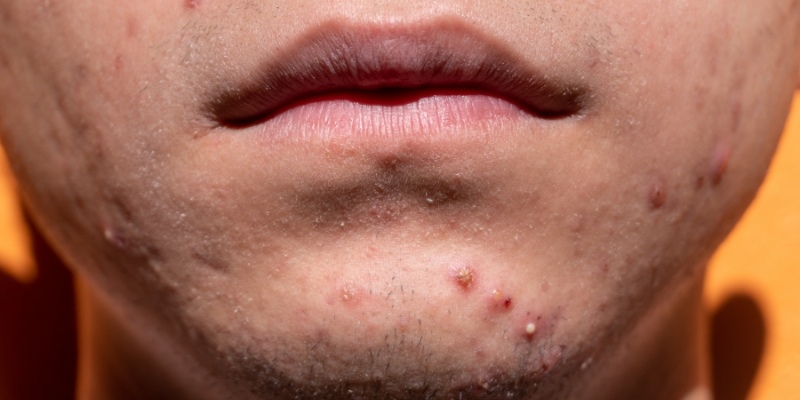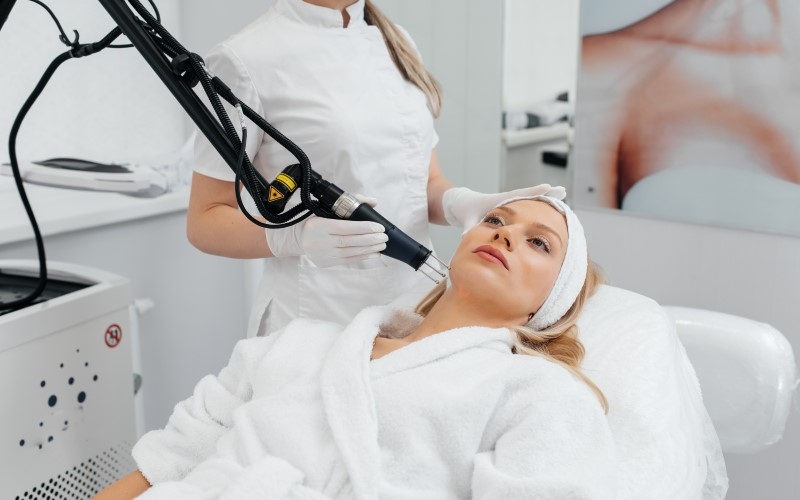From Causes to Cures: Demystifying Smokers Acne and Its Management
Feb 11, 2024 By Madison Evans
Smokers acne, a common issue among individuals who smoke tobacco, is a skin condition that can be frustrating to deal with. From its causes to effective management strategies, understanding smokers acne is essential for those affected. In this article, we'll delve into what smokers acne is and provide insights on effectively managing it.
What Causes Smokers Acne?
As the name suggests, smokers acne is specifically linked to smoking tobacco. While acne can have various causes, smoking can exacerbate the condition due to its impact on the skin and overall health. This type of acne appears predominantly on the face, particularly around the cheeks and chin, but can also affect other body areas.
The primary cause of smokers acne is the harmful chemicals present in tobacco smoke. Smoking leads to the constriction of blood vessels, reducing the flow of oxygen and nutrients to the skin. This decrease in blood flow hinders the skin's ability to repair itself and fight off bacteria, making smokers more prone to acne breakouts.
Additionally, smoking increases the production of sebum, the skin's natural oil. Excess sebum can clog pores and trap bacteria and dead skin cells, leading to the formation of acne lesions.
Identifying Smokers Acne
Smokers acne typically presents as small, red bumps or whiteheads on the skin. These blemishes can vary in size and severity, ranging from mild to moderate or severe. They often appear on the face, particularly around the cheeks, chin, and jawline, but can also occur on the neck, chest, and back. Other identifying factors include:
Persistence and Resistance
One distinguishing characteristic of smokers acne is its persistence and resistance to traditional treatments. While some individuals may experience temporary improvement with over-the-counter products, smokers acne often recurs or fails to respond adequately to these treatments. This resistance can be frustrating for those affected by the condition, leading to feelings of self-consciousness and low self-esteem.
Lesion Types
In addition to red bumps and whiteheads, smokers acne can manifest as papules, pustules, nodules, or cysts, depending on the severity of the condition. These lesions may be accompanied by inflammation, swelling, and tenderness, especially if they become infected or irritated.
Identifying smokers' acne is the first step toward effective management despite its challenges. By recognizing the symptoms and understanding the underlying causes, individuals can seek appropriate treatment and make lifestyle changes to improve their skin and overall well-being.

Dealing with Smokers Acne
Managing smokers acne requires a comprehensive approach addressing the underlying causes and the visible symptoms. Here are some effective strategies for dealing with smokers acne:
Quit Smoking:
The most effective way to prevent and manage smokers acne is to quit smoking altogether. By eliminating exposure to tobacco smoke, you can improve blood circulation, reduce inflammation, and promote healthier skin.
Follow a Consistent Skincare Routine:
Establishing a regular skincare routine can help keep smokers acne under control. Use gentle, non-comedogenic cleansers and moisturizers to cleanse the skin without causing further irritation. Avoid harsh scrubbing or abrasive products that can exacerbate acne flare-ups.
Eat a Balanced Diet:
A diet rich in fruits, vegetables, lean proteins, and whole grains can promote skin health and reduce the severity of acne breakouts. Avoiding greasy, processed foods and sugary snacks can help prevent inflammation and keep acne at bay.
Consider Topical Treatments:
In some cases, topical treatments containing ingredients like benzoyl peroxide, salicylic acid, or retinoids may be prescribed to help manage smokers acne. These products work by unclogging pores, reducing inflammation, and preventing new acne lesions from forming.
Consult a Dermatologist:
If over-the-counter treatments fail to improve smokers acne, it may be time to consult a dermatologist. A dermatologist can assess the severity of the condition and recommend personalized treatment options, such as prescription medications or procedures like chemical peels or laser therapy.

Smoking and Different Acne Forms
While Acne-Pustulosis-Associated Arthritis (APAA) is strongly tied to cigarette smoking, the direct link between smoking and common forms of acne like acne vulgaris remains unclear, sparking debate among experts.
Though some older studies suggest smoking may exacerbate acne, it's uncertain whether smoking directly worsens acne or if smokers simply have more severe skin issues due to prolonged tobacco use.
A 2020 review of studies uncovered conflicting evidence regarding the relationship between smoking and acne. While some studies indicated a direct correlation, others found no significant connection, leaving the matter inconclusive and requiring further investigation.
Acne Inversa
Acne inversa, also known as hidradenitis suppurativa, stands as a distinct inflammatory skin condition closely associated with smoking. It manifests as large pus-filled nodules prone to bursting, leaving visible scars, with middle-aged female smokers being the most commonly affected demographic.
Unlike traditional acne, acne inversa targets the apocrine glands responsible for sweat secretion rather than the sebaceous glands producing sebum. These acne-like nodules are larger and primarily occur in regions like the armpits, groin, thighs, or buttocks. While the exact cause of acne inversa is known, smoking emerges as a primary triggering factor for the disease, emphasizing the significant impact of tobacco use on skin health.
Understanding the connection between smoking and acne, including the distinct characteristics of conditions like acne and inversa, highlights the importance of considering lifestyle factors in managing skin health effectively. Further research into the relationship between smoking and acne is essential for developing targeted interventions and improving patient outcomes.
Conclusion
Smokers acne can be challenging to manage, but with the right approach, it is possible to achieve clearer, healthier skin. By understanding the underlying causes of smokers acne and implementing effective skincare habits, individuals can take control of their skin health and reduce the impact of smoking on their appearance.
Remember, quitting smoking is the best thing you can do for your skin and overall well-being. Take proactive steps to prioritize your health and say goodbye to smokers acne for good.







